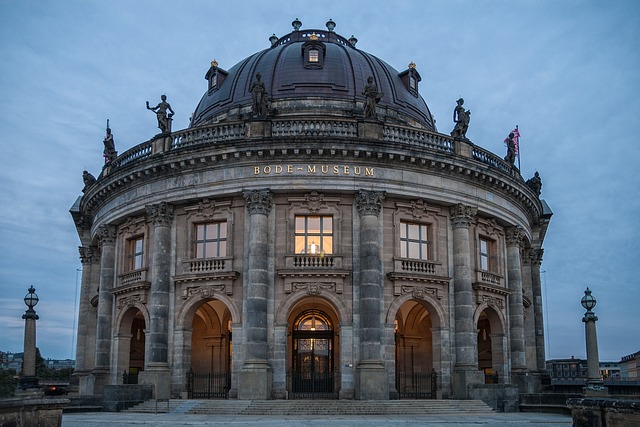Exploring the Enigmatic: A Guided Tour Museum Experience
In an era where instant gratification and rapid experiences dominate our lives, the timeless allure of museums continues to draw people into deep dives of history, art, culture, and science. Museums serve as sanctuaries for human expression, retaining and presenting stories that transcend generations. But, what makes visiting a museum an enriching experience? While wandering aimlessly through an exhibition can be rewarding, nothing compares to the intimacy and insight of a guided tour. This article explores the captivating essence of guided museum tours, offering an engaging narrative that encapsulates the total experience.
The Allure of Museums
Museums have long stood as guardians of human history and culture, providing a platform for reflection and discovery. Ranging from local history collections to world-renowned art galleries, each museum presents a unique narrative waiting to be uncovered. What is it that makes museums so appealing? Their ability to ignite curiosity, provoke thought, and inspire creativity serves as a fundamental draw. Through their curated collections, museums allow visitors to engage with the past in a way that feels immediate and profound.
When you walk into a museum, there’s an unmistakable atmosphere—a solemn yet stimulating energy permeates the air. Whether it’s the scent of aged books in a natural history exhibit or the sight of vibrant contemporary art, each moment contains the potential for wonder. It’s no wonder that guided tours have emerged as a popular means to enhance this experience.
The Essence of a Guided Tour
At its core, a guided tour is an immersive journey led by a knowledgeable individual who serves as both a facilitator and storyteller. Rather than relying on plaques and informational graphics alone, participants have the opportunity to experience art and artifacts through the eyes of an expert. This human connection is what sets guided tours apart from traditional visits.
Guides often possess an intricate understanding of their subject matter, sharing anecdotes and narratives that breathe life into static displays. Their firsthand accounts provide context and nuance that enrich the visitor’s understanding. Imagine witnessing a stunning Monet painting while learning about the Impressionist movement and its impact on the realities of 19th-century France. Guided tours offer an opportunity to transcend the surface, encouraging deeper contemplation and appreciation.
The Structure of a Guided Tour
Each guided museum experience boasts its own unique structure, often tailored to the specific audience and theme of the exhibition. While the framework may vary, several elements commonly define guided tours:
Personal Interaction: One of the greatest advantages of a guided tour is the opportunity for personal interaction. Participants can ask questions, spark discussions, and share insights with the guide and fellow attendees. This collaborative dialogue fosters a sense of community and enriches the learning process.
Curated Insights: Guides often craft their narratives to focus on particular aspects of the collection. Whether emphasizing social and political contexts, artistic techniques, or scientific discoveries, their distinct perspectives shape the visitor’s understanding and engagement with the exhibits.
Behind-the-Scenes Access: Depending on the museum, some tours may offer exclusive access to areas typically closed to the public. This can include restoration workshops, archives, or private galleries, providing an intimate look at the museum’s inner workings.
Themed Experiences: Many museums create themed tours to align with special exhibitions or anniversaries. These tours enhance the relevance of displays, connecting them through overarching concepts or narratives. Visits to art museums during specific temporary exhibits are especially illuminating, as they often evoke discussion around contemporary issues or cultural shifts.
The Impact of Technology
While traditional guided tours thrive on in-person interactions, technology has dramatically transformed the experience in recent years. Mobile apps, augmented reality (AR), and audio guides have made it easier than ever for visitors to engage with museum content. These innovations complement guided tours by enhancing accessibility and interactivity. For instance, guided tours may include audio features that allow participants to catch up on missed information or delve deeper into technical explanations without disrupting the flow of the tour.
Moreover, virtual tours have brought museums to global audiences, allowing people to explore collections from the comfort of their homes. While this format cannot replace the magic of physically being in a museum, it certainly enriches the landscape of accessible learning.
Benefits of a Guided Museum Experience
Participating in a guided museum tour can present a host of benefits that enhance both the individual and collective experience:
Deepened Understanding: Guided tours facilitate a learning environment where complex ideas can be explored in an approachable manner. By discussing themes within the exhibition, guides help participants connect the dots and appreciate the broader implications of a work or artifact.
Increased Engagement: Having a guide fosters a more participatory environment. Questions and discussions can stimulate curiosity, creating an engaging experience that compels one to think critically and make personal connections to the material.
Enhanced Appreciation: The stories and secrets shared during a tour can often spark a greater appreciation for a piece of art or a historical event. A deeper understanding of the motivations and challenges faced by an artist or historical figure lends emotional weight to the experience.
Social Connection: Group tours create a sense of camaraderie as participants share the experience together. Engaging with other visitors can lead to interesting conversations and new friendships, enriching the museum-going experience.
Choosing the Right Guided Tour
With the variety of guided tours available, selecting one that aligns with your interests is crucial. Before attending, consider these factors:
Interests: Reflect on the themes or topics that captivate you the most. Whether your focus lies in fine arts, ancient artifacts, or modern science, understanding your interests will lead to a more satisfying experience.
Tour Length: Tours can vary in duration, from short highlights to full-day explorations. Anticipate how much time you can devote to the experience, as this may influence your decision.
Group Size: Consider the scale of the tour. Smaller tour groups often enable more interaction with the guide and personalized learning experiences.
Expertise of the Guide: Take note of the background of the tour guide. A guide with relevant expertise and a passion for their field can dramatically affect the quality of the experience.
Conclusion
The thoughtful exploration of museums guided by knowledgeable experts offers an unmatched experience that expands our understanding of human history and creative expression. Engaging with art and artifacts through a curated lens infuses new significance into each exhibit, transforming a simple visit into an unforgettable journey. As we navigate the complexities of modern life, museums remain a steadfast beacon of knowledge and inspiration, waiting patiently for us to explore their enigmatic depths.
Whether you’re an art aficionado or a curious traveler looking to expand your horizons, a guided museum experience promises to evoke wonder, provoke thought, and deliver insights that resonate long after leaving. So, the next time you find yourself in the hallowed halls of a museum, consider taking a guided tour. The stories waiting to be told may very well change the way you see the world.


